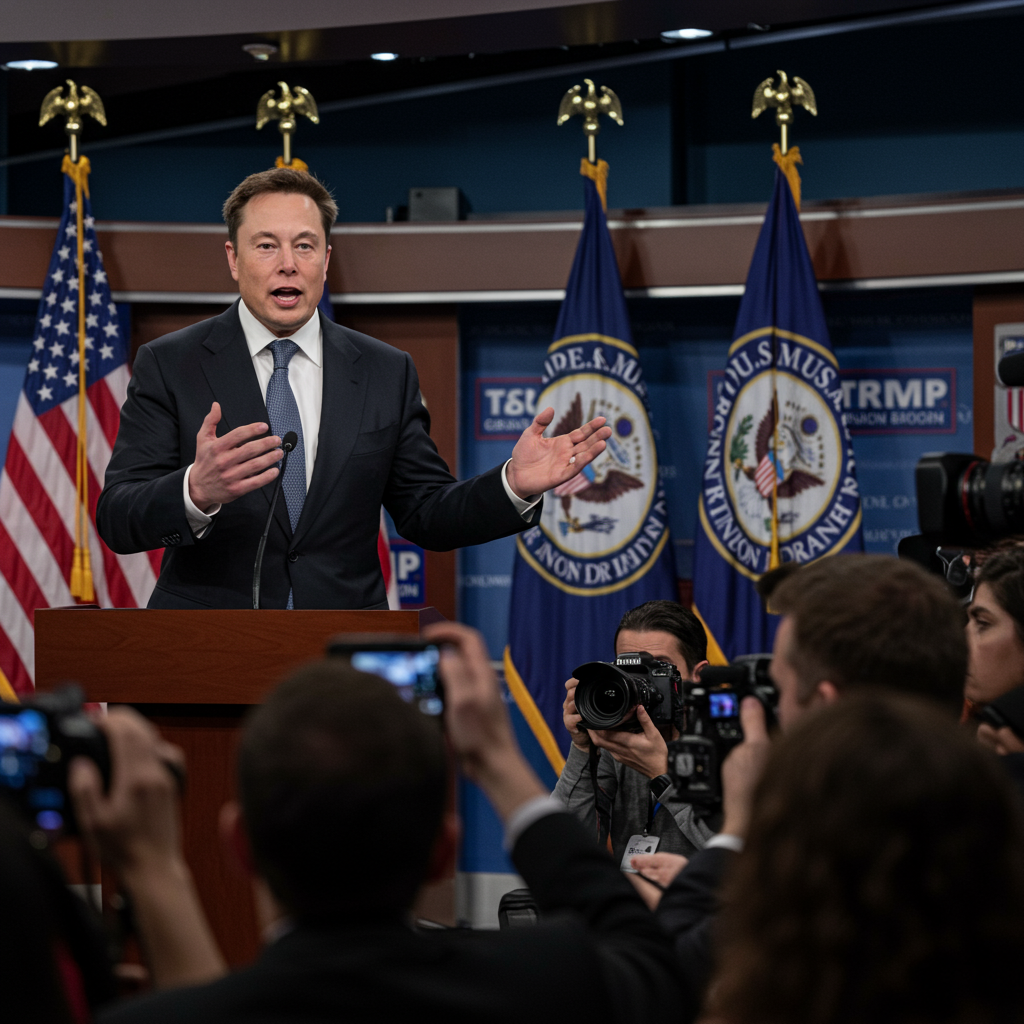The U.S. labor market delivered an unexpected jolt last month, adding a robust 147,000 jobs. This figure significantly exceeded economists’ predictions of a slowdown, painting a picture of economic resilience despite mounting uncertainties. The surprisingly strong performance in hiring has immediate and significant implications for the Federal Reserve, making a near-term cut to interest rates less probable.
Employers largely shrugged off concerns regarding broader economic uncertainty and potential impacts from President Donald Trump’s immigration and trade policies. This latest report from the Labor Department offers strong support for the administration’s argument that the current job market and price stability can withstand recent major policy shifts.
Jobs Growth Defies Expectations
Market consensus had widely anticipated a deceleration in the pace of nonfarm payroll expansion, with estimates averaging around 110,000 new jobs. This forecast was well below the 146,000 jobs averaged over the preceding year. Economists had also predicted a slight uptick in the unemployment rate, projecting it would rise by a tenth of a percentage point to 4.3 percent.
Instead, the official government data revealed a much stronger performance. The economy added 147,000 jobs, comfortably beating the consensus estimate. Furthermore, the unemployment rate did not rise; it actually fell to 4.1 percent, reaching a level near historic lows. Adding to the positive picture, government estimates for job gains in April and May were revised upwards by a combined 16,000 positions, indicating stronger underlying momentum in prior months than initially reported.
Wage Increases Continue
Beyond just job numbers, the report showed continued positive trends in worker pay. Average hourly earnings climbed at a rate of 3.7 percent compared to a year ago. While monthly gains were more moderate at 0.2 percent, this annual wage growth level is approaching the Federal Reserve’s informal target of 3.5 percent. The Fed views this wage level as broadly consistent with its goal of bringing inflation down to its 2 percent target over time.
Despite the positive headline figures, some analysts noted potentially conflicting signals within the data. While the Bureau of Labor Statistics (BLS) reported overall nonfarm payroll growth, a separate report from payroll servicer ADP indicated a loss of 33,000 private sector jobs in June. This marked the first decline in private payrolls since March 2023 and followed a downward revision of May’s ADP numbers.
Sectoral Shifts and Underlying Trends
The official BLS report provided a detailed look at where job gains and losses occurred. State and local governments were major drivers of hiring, adding a combined 80,000 positions, largely within the education sector. Health care also contributed significantly, adding 47,000 jobs, predominantly in hospitals and nursing care facilities.
In contrast, some sectors saw job reductions. Manufacturers shed 7,000 workers. Notably, the federal government sector also reported a loss of 7,000 jobs. This brings the total loss in federal employment to 69,000 since January, a trend linked to initiatives aimed at reducing federal spending, such as the Department of Government Efficiency (DOGE). According to ADP data, job losses in the private sector were concentrated in professional and business services, as well as education and health services, particularly within smaller companies (under 50 employees). Large companies (over 500 employees) saw job gains.
Economists interpreting the ADP data suggested that while widespread layoffs remain infrequent, there is a growing “hesitancy to hire and a reluctance to replace departing workers.” This hesitancy is largely attributed to economic unknowns, particularly those stemming from ongoing trade policy uncertainty. Despite this potential slowdown in hiring momentum within the private sector as reported by ADP, the official BLS data indicates that it has not yet meaningfully dented overall hiring across the economy.
Labor Force Participation Declines
Another point of concern raised by some analyses is the continued decrease in the size of the labor force, which includes individuals working or actively seeking employment. The labor force shrank by 130,000 last month, following a larger drop of 625,000 in the preceding month. Consequently, the labor force participation rate fell, reaching its lowest level since 2022. This trend suggests potential constraints on future labor supply, even if current hiring remains steady.
While some indicators point to receding underlying demand for new workers, potentially linked to “consumer spending fatigue,” the official job numbers remain robust. The steady unemployment rate and stronger-than-expected hiring provide a compelling case for the economy’s current health.
Implications for the Federal Reserve
The strong jobs report significantly impacts the outlook for U.S. monetary policy. It reduces the probability that Federal Reserve Chair Jerome Powell and the central bank’s policymakers will decide to cut interest rates when they convene later this month. President Trump has relentlessly pressed the Fed chair to reduce borrowing costs, arguing it would spur further investment and hiring. However, Powell has maintained that the central bank is not in a rush, citing uncertainty around how the president’s tariffs could influence inflation.
With the labor market showing no clear signs of an imminent slowdown, the primary rationale for lowering rates – stimulating a weakening economy – is diminished. Investors quickly reacted to the data; yields on short-term government debt climbed as investors exited bets that the Fed might reduce rates in July. According to CME Group’s FedWatch tool, investors are now placing a 93.3 percent likelihood that the central bank will keep the target rate within the current 4.25 percent to 4.5 percent range at its upcoming meeting.
Experts Weigh In
Economists from various institutions highlighted how the report strengthens the Fed’s hand. Seema Shah, chief global strategist at Principal Asset Management, stated that the data “completely dispels their case for imminent rate cuts and implies that there is absolutely no urgency for Fed support.” She added, “We expect the first cut to come in late 2025.”
CNBC co-anchor Andrew Ross Sorkin echoed this sentiment, noting the report gives Powell the “upper hand” against President Trump’s public demands for immediate rate cuts. Sorkin argued that the robust jobs number provides Powell clear justification to maintain the current interest rate stance, effectively arguing that he isn’t lowering rates because the economy is fundamentally “quite good.”
Economists like Bradley Saunders of Capital Economics agreed, stating the better-than-expected report gives more “hawkish” members of the Federal Open Market Committee (FOMC) reason to push back against expectations for quick interest rate cuts.
Tariffs and Uncertainty Remain Factors
Despite the strong job growth, the economic landscape remains colored by the administration’s trade policies. Tariffs on foreign goods and the uncertainty surrounding future trade deals present ongoing challenges for businesses. Companies face direct costs from tariffs and the indirect challenge of profound uncertainty about future policy, which can lead to a “wait and see” approach regarding hiring and investment. While the labor market has shown resilience so far, the long-term impact of this uncertainty on business decision-making is still being assessed.
The Fed is operating under its dual mandate: controlling inflation and maximizing employment. While the jobs report supports the “maximum employment” side, the potential for tariffs to cause “stagflation” – a challenging scenario of rising inflation alongside a slowing economy – remains a concern. Raising rates to combat tariff-induced inflation could stifle growth, while lowering them could worsen inflation. The robust jobs data makes the latter dilemma less pressing for now. Powell has indicated the Fed will continue a “wait and learn” approach, assessing further data on how tariffs affect prices and the labor market before adjusting rates.
Frequently Asked Questions
What were the key figures in the latest US jobs report?
The official report from the U.S. Labor Department showed the economy added 147,000 jobs last month, significantly exceeding expectations. The unemployment rate fell to 4.1 percent, a level considered near historic lows. Average hourly earnings increased by 3.7 percent year-over-year, and job gains in previous months were revised upward by a combined 16,000 positions.
How does this jobs report impact the Federal Reserve’s decision on interest rates?
The strong jobs report makes it less likely that the Federal Reserve will lower interest rates in the near term. A robust labor market indicates the economy is healthy, reducing the need for stimulus through lower borrowing costs. Fed Chair Jerome Powell has stated the central bank will assess economic data, including the impact of tariffs on inflation, before adjusting rates. The jobs report provides justification for maintaining the current rate level despite political pressure to cut.
Why are some reports showing different job trends than the official data?
While the official Bureau of Labor Statistics (BLS) report showed strong nonfarm payroll growth, a separate report from ADP indicated a loss of 33,000 private sector jobs. This difference highlights potential nuances; the ADP report suggests a “hesitancy to hire and a reluctance to replace departing workers” in the private sector, possibly linked to economic uncertainty and trade policy. The BLS report captures broader government hiring, which offset some private sector softness.
Conclusion
The latest U.S. jobs report paints a picture of unexpected strength and resilience in the labor market. Adding 147,000 jobs and seeing the unemployment rate fall to 4.1 percent defies predictions of an economic slowdown and supports arguments for the economy’s ability to withstand current policy headwinds. While underlying trends in private sector hiring and labor force participation warrant continued monitoring, the headline numbers provide a strong signal of health. Crucially, this report significantly reduces the likelihood of the Federal Reserve cutting interest rates in the immediate future, reinforcing the central bank’s cautious stance amidst ongoing economic uncertainty, particularly surrounding trade policy.




